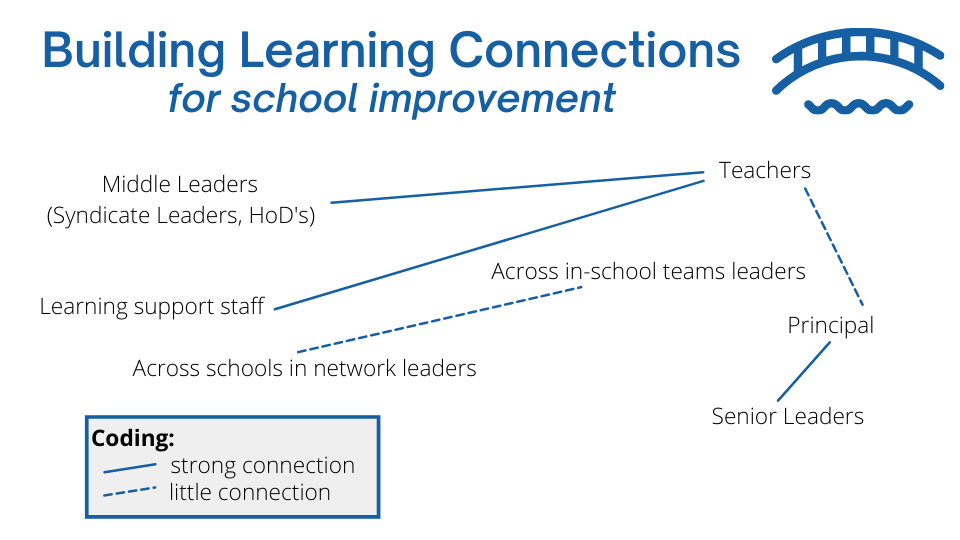Bridging 2021 and 2022: Let’s think about building connection and cohesion

|
by Maggie Ogram14 January 2022 |
Towards the close of 2021 Leadership Coach Sue Walsh’s blog asked us to reflect in our school context upon three questions:
- What worked well this year? (affirmation)
- What should I/we think about doing differently? (evaluating)
and - Is there something I/we should be thinking about implementing/introducing in the next school year? (strategizing).
Reflecting upon these inquiry starters I am prompted to ask you to consider investigating the third question specifically in relation to further developing collaborative leadership strategies to build connectivity across learning spaces within schools to enhance learning for all.
You will find content in Module 5 Session 1 in the CLARITY Learning Suite (CLS) that reminds us of the leadership capabilities required to inquire into and agree strategies to this collaborative work. To view this content, register for the CLARITY Learning Suite.
As you reflect on how you might collectively develop collaborative leadership strategies to build connectivity across learning spaces within schools, I would like to share a flavour of collaborative leadership workshops undertaken by across-school networks I have had the opportunity to work alongside in Auckland over some time. Throughout last year the school networks chose to focus their collaborative leadership inquiries on building connectivity between spaces within their school. When we think about learning spaces in schools, groupings that may come to mind are:
• Senior Leaders - Principal and Deputies
• Middle Leaders - such as Syndicate Leaders, Heads of Department (HoD’s)
• Middle Leaders who work across in-school teams and across schools in their network
• Teachers
• Learning Support Staff
There may be other groupings that you would choose to add that are applicable in your context.
Take a look at the diagram below that suggests, along with some examples, a way to frame your collaborative mind-mapping to show areas Senior and Middle Leadership teams may identify as needing improvement for learning connections.

How does this speak to you as we begin the new year?
I encourage you to intentionally give time to complete a reconnaissance with your people to identify where improvement in learning connections is needed and most importantly why.
Reflect and discuss what is problematic about any perceived weak connections and scrutinise evidence to validify these perceptions. Then, begin collaborative leadership inquiries into how connectivity may be strengthened so that all teachers and students realise growth in learning.
References:
Sharratt, L. (2019). What Matters MOST in Learning, Teaching and Leading. Thousand Oaks, CA.Corwin.
Further suggested reading:
Woods, P. A., & Roberts, A. (2018). Collaborative school leadership: A critical guide. Los Angeles, CA: Sage Publications.
Join the CLARITY Learning Suite
Take part in the conversations about this and other Blog posts.